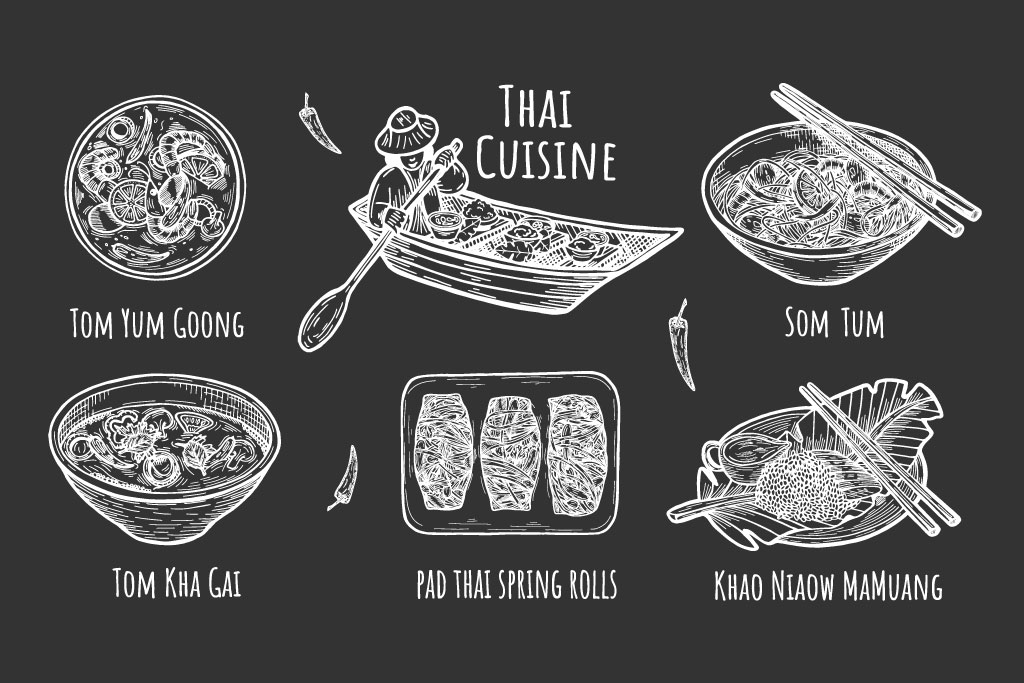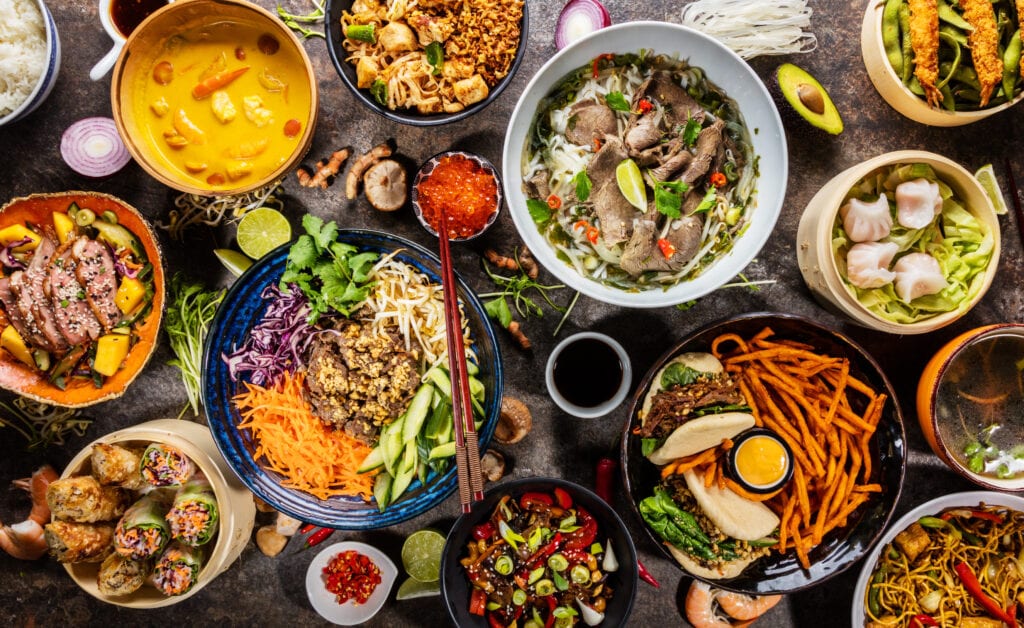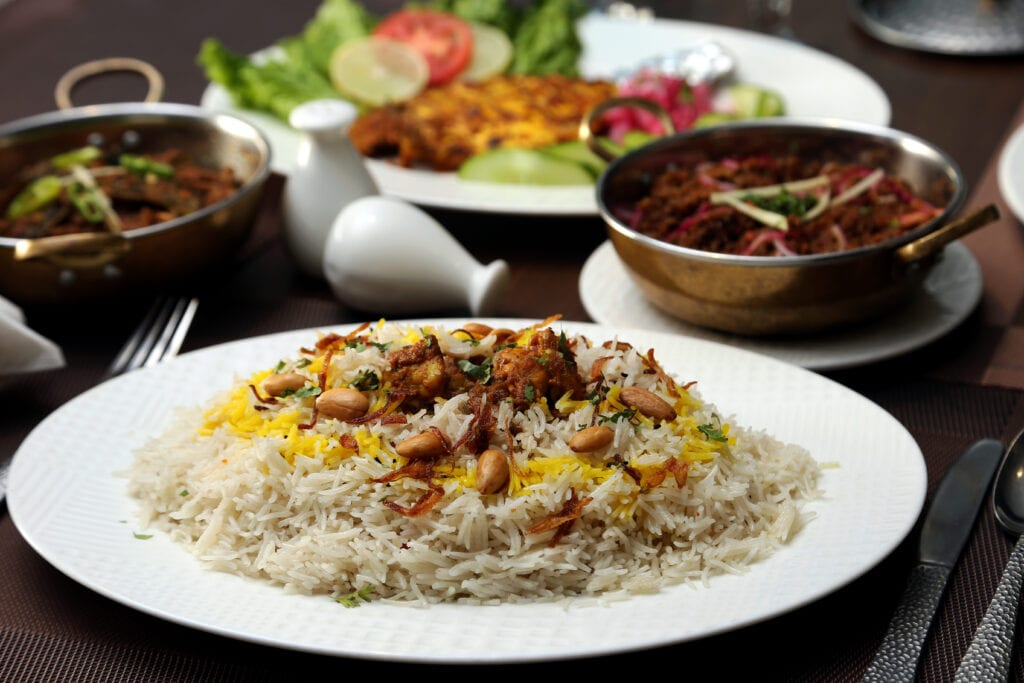
Introduction to Thai Cuisine
Thailand (also called the Kingdom of Thailand) is present in the midst of the Southeast Asian Indochinese Peninsula. Currently, it has 76-provinces and a position amongst the world’s largest as well as populous countries.
Do you want to try out the country’s specialty, the Thai Cuisine? Well, then before you do so, it is better to learn about its fundamentals.
In the following blog, I have provided a complete introduction to Thai cuisine. You will find every aspect covered, from food culture to main ingredients. Read more to unravel!
Thai Food Culture
Primarily, the Thai cuisine gets divided into four categories, including Tom (boiled dishes), Yam (spicy salads), Tam (pounded meals), and Gaeng (curries).
Thai cuisine gives immense importance to the appearance, aroma, and flavor of the food. All of the Thai dishes have a complex yet appetizing look, smell, and good flavors.
However, there lies a great debate on the nutritional content of Thai food. Some claim the meals to be nutrient-dense, while some say against the claim. Nevertheless, the healthiness of food greatly depends on a number of factors.
Traditionally, Thai people prefer eating directly with hands and sitting together on long mats. In the upper-middle class, a coffee table gets used instead. Over time, a majority of people have adopted the use of spoons, forks, and chopsticks.
A famous Thai tradition is to mix rice with different curries and side dishes before eating. Another common practice is to make small, flattened balls of sticky rice by hand and then dipping it into side dishes.
Moreover, Thai mealtimes comprise of several dishes. Also, it gets considered good to serve more number of dishes than the guests at the table.

Thai Food History
Over time, the neighboring countries have influenced Thai cuisine greatly. The very first alteration in Thai cuisine came from India when the Thai people learned the use of various spices in food.
The people in Thailand also learned the making of herbal medicines from Indians. During those times, Thai brought a variety of plants from India to Thailand.
The second major influence in Thai cuisine came from Chinese. It is said that a majority of current Thai dishes were previously Chinese, such as rice porridge, steamed buns, and fried rice noodles.
Chinese also taught Thai people about different cooking techniques, such as frying, and the usage of the wok. They also introduced some ingredients, including tofu, noodles, fermented bean paste, and soy sauces.
Next, Thai cuisine got influenced by Persia, Portuguese, and other western parts of the world. The Americans introduced a majority of ingredients, such as pineapple, cashews, tomatoes, peanuts, corn, pumpkin, and much more.
Regional Cuisines
The regional Thai cuisines have gained a lot of influence from the neighboring states. For example, the northern Thai shares similarities with Shan State in Burma and Yunnan province in China.
However, there exist five distinct regional Thai cuisines. Below, you can find an evaluation of each Thai regional cuisine.
- Bangkok
Bangkok cuisine keeps on evolving with new international influences. But, Teochew and Portuguese have influenced Bangkok cuisine the most.
- Central Thai
Central Thailand has several flat and wet rice-growing plains. These were once the sites of former Thai kingdoms. The main ingredient in Central Thai cuisine is coconut milk. Some popular dishes of its cuisine are green papaya salad, meat salad, and grilled chicken.
- Northern Thai
A series of mountainous region characterizes northern Thailand. Northern Thai cuisine is similar to Northeastern Thai cuisine.
- Northeastern Thai
Northeastern Thailand is a rather arid region and comprises of the plateau. Thus, the most popular ingredient is fermented fish. Also, they consume a lot of sticky rice and a wide variety of edible insects.
- Southern Thai
The Southern Thai dishes are lighter, with lesser oil and seasoning. Usually, the dishes are a mixture of plain ingredients, such as rice with chicken and vegetables.

Main Ingredients of Thai Cuisine
Thai food is undeniably exotic. It involves a massive variety of food items, ranging from fruits to edible fungus. However, the primary ingredient all over Thailand is rice and noodles. Both these food items get consumed in abundance and in various forms.
Here is a table listing the most popular ingredients in Thai cuisine.
| Fruits | Vegetables | Meat | Herbs & Spices | Insects |
| Jackfruit | Cabbage Sprouts | Duck | Galangal | Cricket |
| Dragon fruit | Pea Eggplant | Water Buffalo | Chinese chive | Mole Cricket |
| Papaya | Bitter Melon | Pork | Turmeric | Pupae of weaver ant |
| Camito | Water Mimosa | Chicken | Ginger | Giant Water Bug |
| Sugar Apple | Bamboo Shoots | Beef | Dried Chili | Caterpillars |
| Rose Apple | Choy sum | Deer | Coriander | Worms |
| Mangosteen | Bok Choy | Wild birds | Curry powder |
Leave your comment
You must be logged in to post a comment.